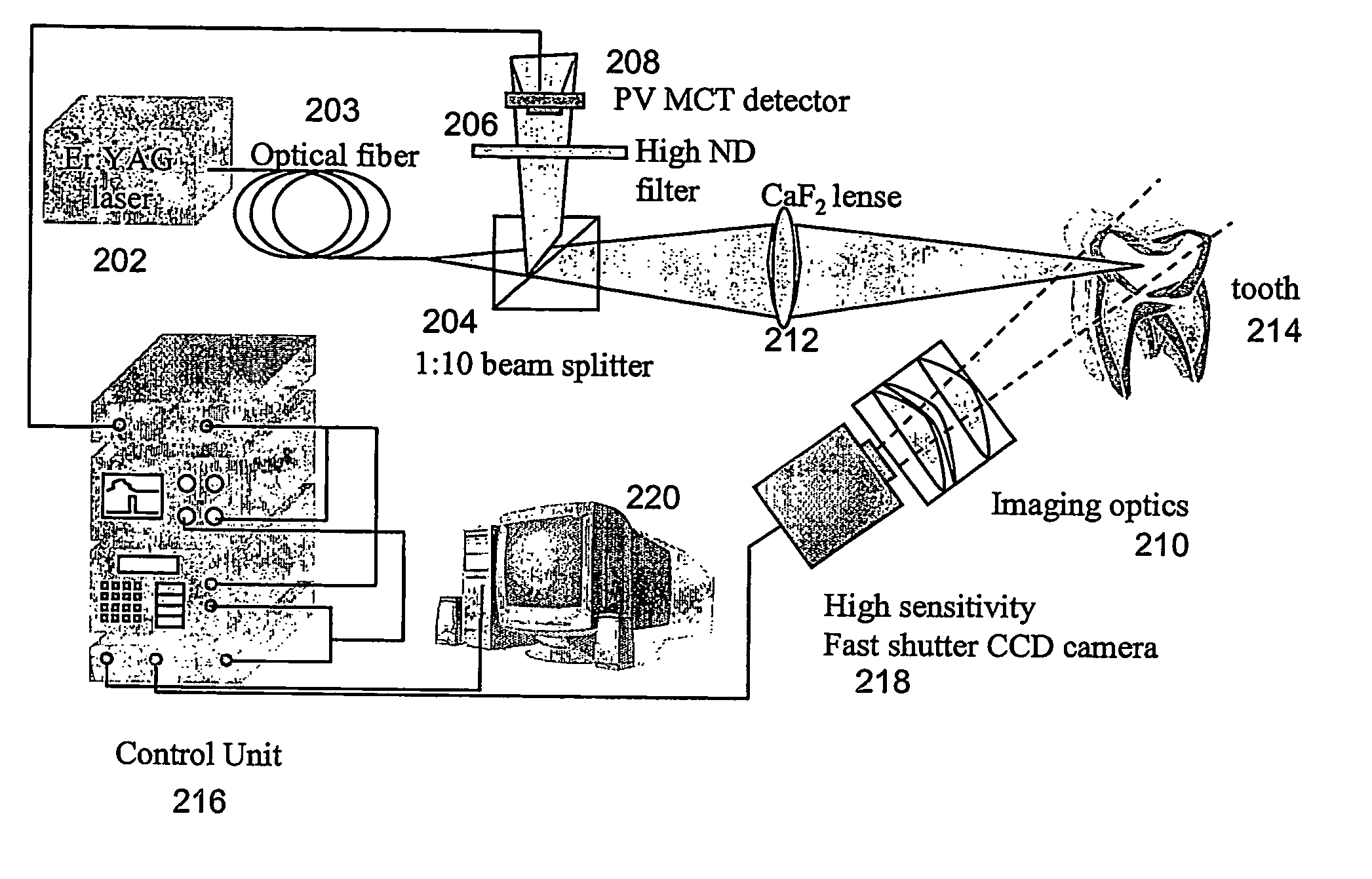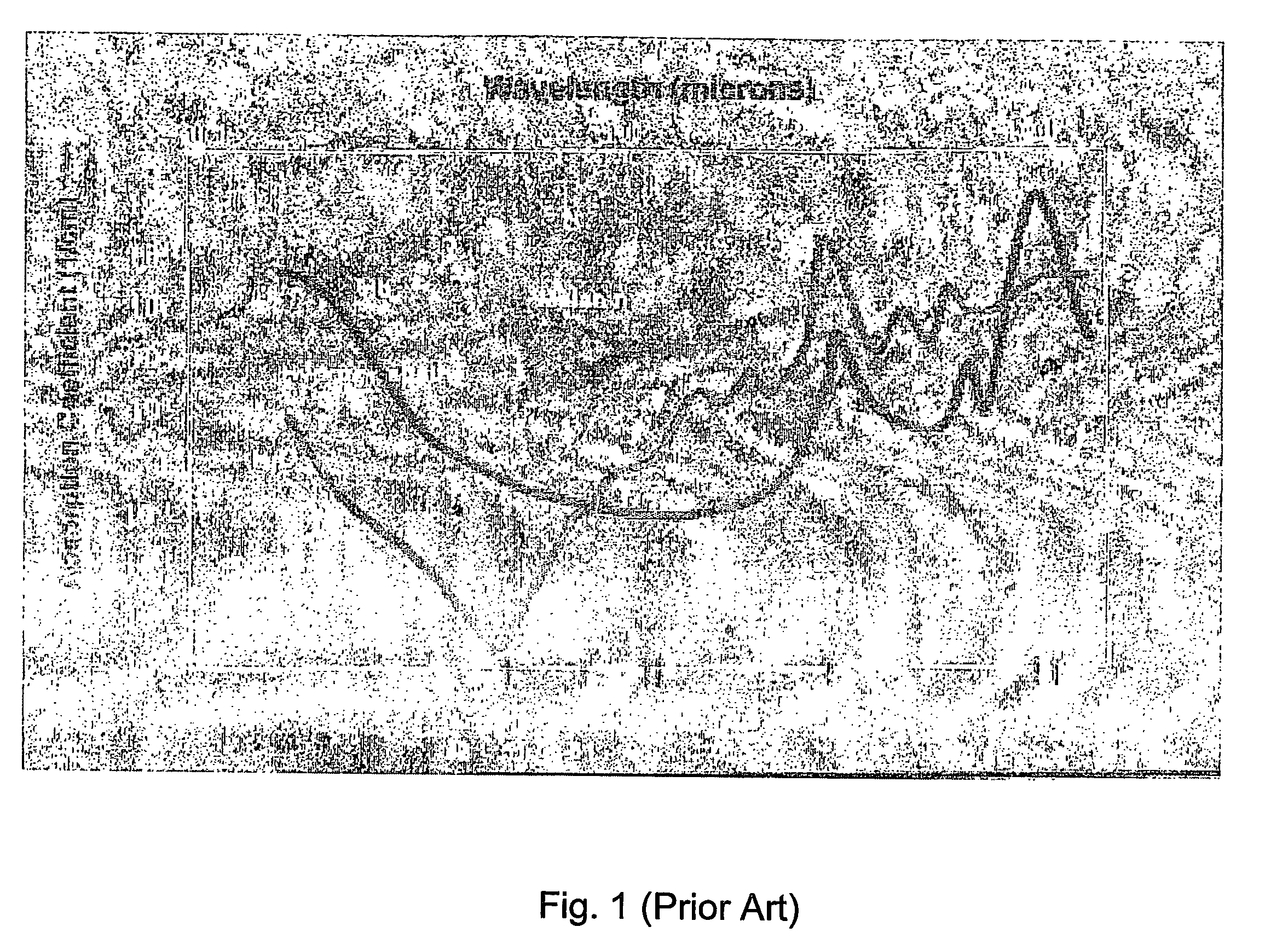System,apparatus and method for large area tissue ablation
a tissue ablation and large-area technology, applied in the field of tissue ablation, can solve the problems of inability to achieve significant practical use of devices, inability to generally use lasers clinically, and extreme discomfort of procedures, and achieve the effect of minimizing the shift of an absorption curv
- Summary
- Abstract
- Description
- Claims
- Application Information
AI Technical Summary
Benefits of technology
Problems solved by technology
Method used
Image
Examples
example 1
A Model for Laser-Tissue Interaction
[0213] Theory
[0214] A theoretical model for laser-tissue interaction dynamics has been developed. The model takes into account the non-linearity of the laser absorption coefficient and the non-uniform intensity distribution within the laser pulse.
[0215] The non-linearity range of the absorption coefficient is known to be significant for extremely high applied energies, such as ablation energies.
[0216]FIG. 12 shows results of measurements of absorption coefficient, α, of water as a function of the applied energy density, were the absorption coefficient, α, is presented on a linear scale in units of cm−1 and the energy density is presented on a logarithmic scale in units of J / cm3 [A. Saar, D. Gal, R. Wallach, S. Akselrod, A. Katzir, Appl. Phys. Lett 50, 1556 (1987)]. The non-linearity of the absorption coefficient is vivid.
[0217] Generally, the experimental results, presented in FIG. 12, may be parameterized using the following equation, define...
example 2
Experimental Investigations of Hard Tissue Ablation
[0231] Methods
[0232] An Er:YAG laser was used for ablating hard tissues of freshly extracted human teeth. The goal of the experiments was to study the dynamic of the interaction between a hard tissue and a laser beam.
[0233] The experimental system is schematically shown in FIG. 15.
[0234] A beam of laser emitted from an Er:YAG laser 203 was guided by an optical waveguide 203 to a beam splitter 204. Beam splitter 204 directed about 90% of the beam to a CaF2 lens 212 which focused the beam onto tooth 214, while the remaining 10% of the beam was directed through a High ND filter 206 to a detector 208 (photovoltaic Mercury-Cadmium-Telluride) and was used for synchronization. The synchronization was governed by a control unit 216, and a computer 220 was used for collecting data. A sensitive fast CCD camera 218, synchronized with the laser beam was used, together with an arrangement 210 of imaging optical elements for imaging tooth 214...
example 3
Fast Scanning of Hard Tissues
[0238] Methods
[0239] An Er:YAG laser of Example 2, was used for ablating hard tissues of freshly extracted human teeth, employing features of the method of the present invention. The goal of the experiments was to optimize the scanning-parameters and to study the effect thereof on the efficiency and quality of the ablating process.
[0240] The experimental system is schematically shown in FIG. 17. The laser radiation and the synchronization with camera 218 were as further detailed hereinabove in Example 2.
[0241] A scanning assembly, essentially as detailed hereinabove was used for scanning tooth 214 with the laser beam. Two galvanometric actuators 228 were used for dynamically diverting the beam.
[0242] A polished gold mirror 8×8 cm in lateral dimension and 1 mm in thickness was manufactured and integrated on galvanometric actuators 228 so as to achieve a minimal moment of inertia. The resulting bandwidth of the scanning assembly was 1.2 kHz. A scannin...
PUM
 Login to View More
Login to View More Abstract
Description
Claims
Application Information
 Login to View More
Login to View More - R&D
- Intellectual Property
- Life Sciences
- Materials
- Tech Scout
- Unparalleled Data Quality
- Higher Quality Content
- 60% Fewer Hallucinations
Browse by: Latest US Patents, China's latest patents, Technical Efficacy Thesaurus, Application Domain, Technology Topic, Popular Technical Reports.
© 2025 PatSnap. All rights reserved.Legal|Privacy policy|Modern Slavery Act Transparency Statement|Sitemap|About US| Contact US: help@patsnap.com



